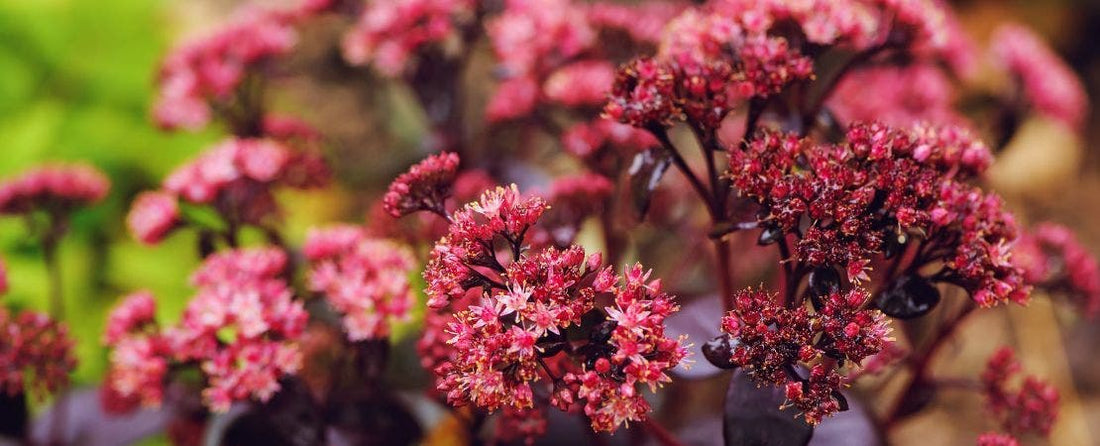Flowering Succulents for a Low Maintenance Garden

Succulents: A Passive Gardener’s Delight
Succulents are nature's gift to those with busy schedules yet a love for vibrant gardens. These resilient plants are designed to thrive with minimal effort, making them a favorite even among those notorious for having a "brown thumb". With their plump, dusky leaves and intriguing foliage shapes that sometimes appear out of this world, succulents effortlessly charm any observer.
For those of us who prefer a low-maintenance gardening approach, the tenacity and visual appeal of succulents are truly a marvel. These plants are built to endure the toughest environmental conditions, ensuring that they can thrive in your home or garden.
What are Ice Plants?
Among the diverse variety of succulents, one standout is the ice plant, scientifically known as Delosperma. These plants are often referred to as "ice plants" due to their glistening, crystal-like appearance, especially when dew or raindrops adorn their fleshy leaves. Ice plant succulents offer a unique aesthetic to any landscape.
Are Ice Plants Perennials?
Yes, ice plants are indeed perennials in many regions. They are well-suited for hardiness zones where the winters are mild, providing year-round interest in the garden. Delosperma cooperi, a popular variety, is particularly beloved for its resilience and stunning features.
The Beauty of Ice Plant Flowers
While succulents are renowned for their foliage, some varieties, like the Jewel of Desert, are best-known for their vibrant floral displays. This everblooming gem cascades with blooms, often overshadowing its equally handsome leaves. The fleshy foliage of ice plants not only adds to their visual appeal but also ensures their resilience to drought conditions.
Sedum: The Versatile Succulent
Another remarkable succulent to consider is Sedum, also known as stonecrop. This plant is a gardener's dream, thriving in both containers and garden beds with ease. Sedum comes in a kaleidoscope of colors, from classic greens to regal purples, burgundies, and smoky blues, offering endless design possibilities.
Growing Sedum in Your Garden
If you're seeking a robust ground cover or a striking addition to your container garden, Sedum fits the bill perfectly. Its adaptability to various soil types and minimal water requirements make it an excellent choice for rock gardens, borders, and even living walls.
Tips for Growing Ice Plants and Sedum Successfully
Well-Draining Soil: Both ice plants and Sedum thrive in well-draining soil. Ensure proper drainage to prevent issues like root rot.
Full Sun: These succulents love basking in the sun. Plant them in areas where they receive at least 6 hours of direct sunlight daily for optimal growth and bloom production.
Hardiness Zones: Check your hardiness zone to determine the best planting times. Ice plants and Sedum can be planted in spring for colder climates, while warmer regions offer extended planting seasons.
Propagating Ice Plants and Sedum: Expand your succulent collection by propagating ice plants and Sedum through stem cuttings. Allow the cuttings to callous over before planting in well-draining soil.
Ice plants, particularly the mesmerizing Delosperma varieties, and Sedum, with its stunning array of colors, are delightful additions to any garden. Their ability to thrive in challenging conditions, coupled with their breathtaking blooms and unique foliage, make them top choices for both novice and experienced gardeners.





